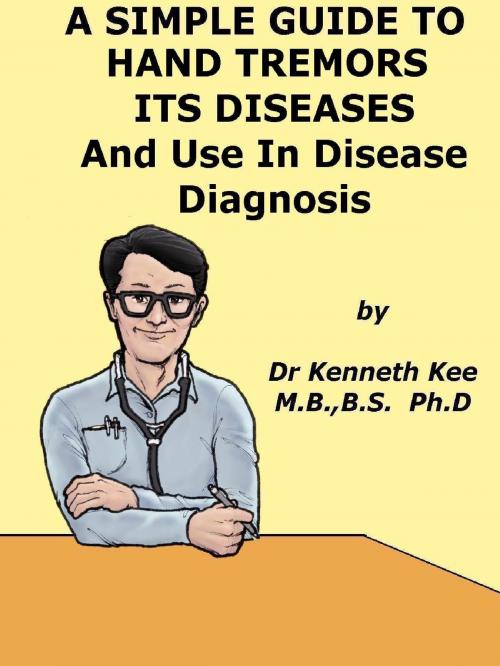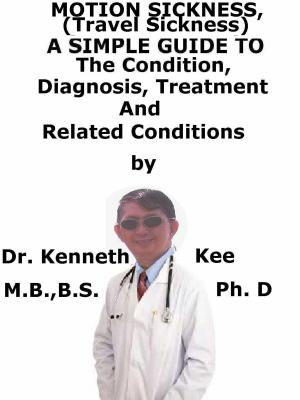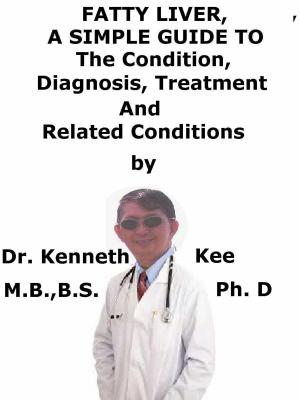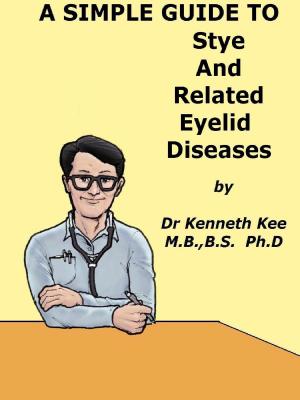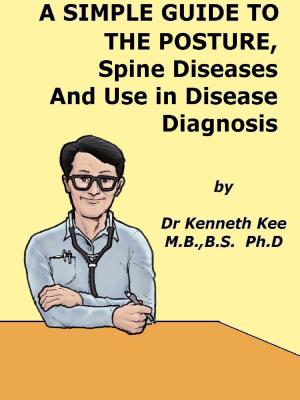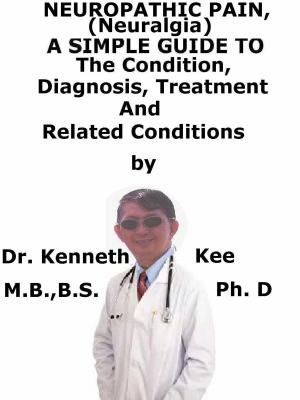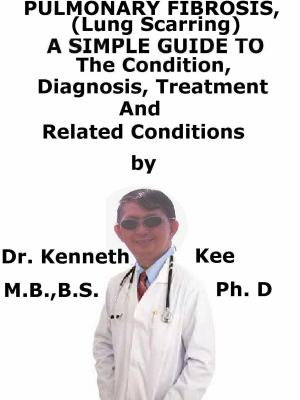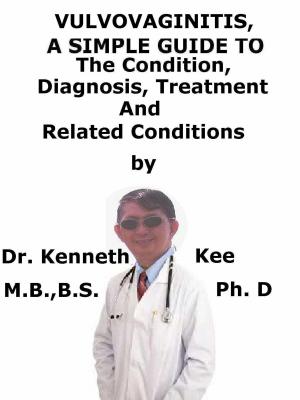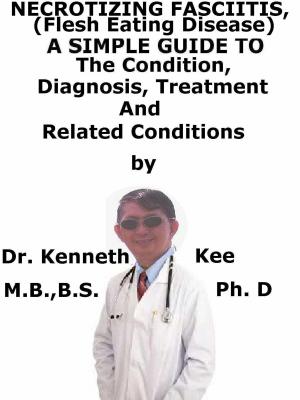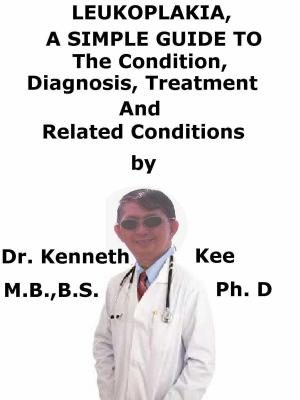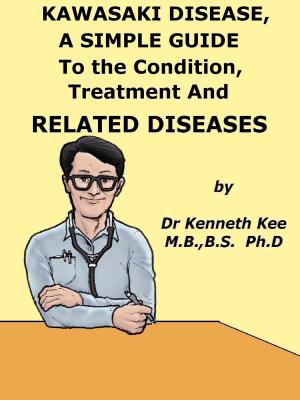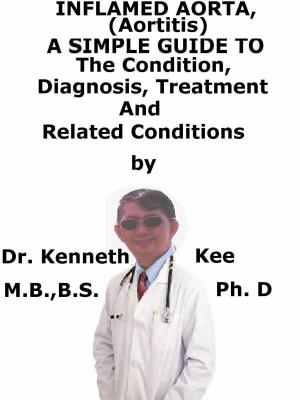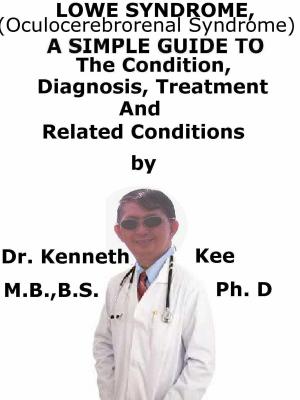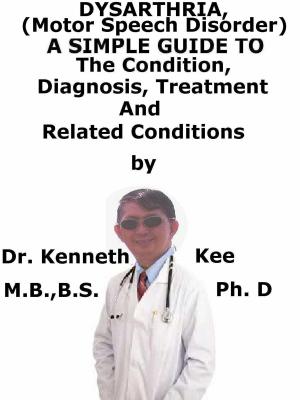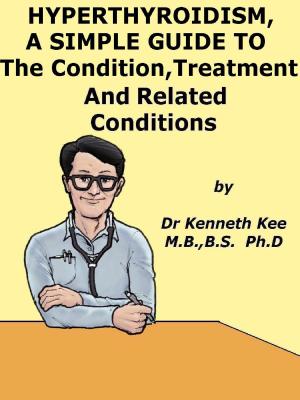A Simple Guide to Hand Tremors, Related Diseases and Use in Disease Diagnosis
Nonfiction, Health & Well Being, Health, Ailments & Diseases, Nervous System & the Brain, Medical, Specialties, Internal Medicine, Neurology| Author: | Kenneth Kee | ISBN: | 9781301772704 |
| Publisher: | Kenneth Kee | Publication: | July 17, 2013 |
| Imprint: | Smashwords Edition | Language: | English |
| Author: | Kenneth Kee |
| ISBN: | 9781301772704 |
| Publisher: | Kenneth Kee |
| Publication: | July 17, 2013 |
| Imprint: | Smashwords Edition |
| Language: | English |
Hand Tremors
I have seen so many hand tremors in my many years of medical practice.
Most of them are very obvious in some stroke and old people.
Hand tremors are important especially when the tremors affect the muscle functions of their hands.
One patient was so affected by her tremors that she could not use her scissors to cut hair as a hairdresser. One time the scissors nearly dropped into her customer’s lap while cutting her hairs.
That was when she came for a checkup and she was found to have a late and severe hyperthyroid condition. She improved after treatment and is back at her hairdressing job.
What are Hand Tremors?
A hand tremor is an involuntary, muscle contraction and relaxation involving to-and-fro movements (twitching) of the hands and fingers.
The best way to demonstrate a hand tremor is by placing a piece of paper on the outstretched fingers.
Slight movement of the paper is within normal physiological finger movements but shaking of the paper is obvious sign of tremors.
Tremor can be a symptom due to neurological disorders in those parts of the brain that control muscles throughout the body or in particular areas such as the hands.
There are 4 common tremors:
- The resting tremors “pill rolling” movements of Parkinson Disease.
This type of tremors is maximal at rest and with emotion but inhibited by movement.
It is typical of Parkinson’s Disease.
- Essential tremor.
This is an accentuation of normal physiological tremors which is present at rest and brought out by placing a piece of paper on the outstretched fingers.
a. It occurs in Thyrotoxicosis where it is associated with warm moist palms, exophthalmos and tachycardia.
b. Anxiety states may produce a similar tremor without the exophthalmos.
c. It also runs in families.
d. In alcoholics the tremor is often reduced by the ethanol and exacerbated by its withdrawal.
e. Taking caffeine may also bring out these tremors.
f. Certain drugs such as antidepressants, adrenergic, anticholinerigics, and xanthines
g. Cigarette withdrawal can also cause the tremors.
h. Low blood sugar together with cold sweats and chills can also cause the tremors
i. It also increases with age (Aging)
- The Intention tremor of Cerebellar disease (finger-nose test)
It can occur in neurologically disease of the cerebellum especially if a stroke is affecting the cerebellar region.
It is reduced or absent at rest.
It is also associated with past-pointing, nystagmus and ataxia including truncal ataxia.
It is rare except in Multiple sclerosis.
- Flapping tremor occurs in hepatic precoma and in the carbon dioxide retention of respiratory failure.
What is the treatment of Hand Tremors?
Treatment
There is no cure for most hand tremors.
Treatment may not be needed unless the tremor interferes with the daily activities or causes embarrassment.
The treatment depends on diagnosis of the cause.
Hand tremors respond to treatment of the underlying condition. Tremor caused by a medical condition such as hyperthyroidism will become better when the condition is treated.
If the tremor is caused by a certain medicine, stopping the drug will usually help it go away.
Non- Medical treatment:
- Physiotherapy
A physiotherapist will test the patient for tremor positioning, muscle control and strength.
The patient must be taught to brace the affected hand during the tremor
He can also keep the affected arm close to the body in order to gain motion control.
Coordination and balancing exercises may help some patients.
-
Avoid caffeine and alcohol.
-
Psychological treatment
Medications
Medicines may help relieve symptoms.
TABLE OF CONTENT
Chapter 1 Hand Tremors
Chapter 2 Disease Diagnosis
Chapter 3 Parkinson Disease
Chapter 4 Hyperthyroidism
Chapter 5 Anxiety
Chapter 6 Alcoholism
Chapter 7 Liver Cirrhosis
Chapter 8 Multiple Sclerosis
Chapter 9 Cerebellar Disease
Epilogue
Hand Tremors
I have seen so many hand tremors in my many years of medical practice.
Most of them are very obvious in some stroke and old people.
Hand tremors are important especially when the tremors affect the muscle functions of their hands.
One patient was so affected by her tremors that she could not use her scissors to cut hair as a hairdresser. One time the scissors nearly dropped into her customer’s lap while cutting her hairs.
That was when she came for a checkup and she was found to have a late and severe hyperthyroid condition. She improved after treatment and is back at her hairdressing job.
What are Hand Tremors?
A hand tremor is an involuntary, muscle contraction and relaxation involving to-and-fro movements (twitching) of the hands and fingers.
The best way to demonstrate a hand tremor is by placing a piece of paper on the outstretched fingers.
Slight movement of the paper is within normal physiological finger movements but shaking of the paper is obvious sign of tremors.
Tremor can be a symptom due to neurological disorders in those parts of the brain that control muscles throughout the body or in particular areas such as the hands.
There are 4 common tremors:
- The resting tremors “pill rolling” movements of Parkinson Disease.
This type of tremors is maximal at rest and with emotion but inhibited by movement.
It is typical of Parkinson’s Disease.
- Essential tremor.
This is an accentuation of normal physiological tremors which is present at rest and brought out by placing a piece of paper on the outstretched fingers.
a. It occurs in Thyrotoxicosis where it is associated with warm moist palms, exophthalmos and tachycardia.
b. Anxiety states may produce a similar tremor without the exophthalmos.
c. It also runs in families.
d. In alcoholics the tremor is often reduced by the ethanol and exacerbated by its withdrawal.
e. Taking caffeine may also bring out these tremors.
f. Certain drugs such as antidepressants, adrenergic, anticholinerigics, and xanthines
g. Cigarette withdrawal can also cause the tremors.
h. Low blood sugar together with cold sweats and chills can also cause the tremors
i. It also increases with age (Aging)
- The Intention tremor of Cerebellar disease (finger-nose test)
It can occur in neurologically disease of the cerebellum especially if a stroke is affecting the cerebellar region.
It is reduced or absent at rest.
It is also associated with past-pointing, nystagmus and ataxia including truncal ataxia.
It is rare except in Multiple sclerosis.
- Flapping tremor occurs in hepatic precoma and in the carbon dioxide retention of respiratory failure.
What is the treatment of Hand Tremors?
Treatment
There is no cure for most hand tremors.
Treatment may not be needed unless the tremor interferes with the daily activities or causes embarrassment.
The treatment depends on diagnosis of the cause.
Hand tremors respond to treatment of the underlying condition. Tremor caused by a medical condition such as hyperthyroidism will become better when the condition is treated.
If the tremor is caused by a certain medicine, stopping the drug will usually help it go away.
Non- Medical treatment:
- Physiotherapy
A physiotherapist will test the patient for tremor positioning, muscle control and strength.
The patient must be taught to brace the affected hand during the tremor
He can also keep the affected arm close to the body in order to gain motion control.
Coordination and balancing exercises may help some patients.
-
Avoid caffeine and alcohol.
-
Psychological treatment
Medications
Medicines may help relieve symptoms.
TABLE OF CONTENT
Chapter 1 Hand Tremors
Chapter 2 Disease Diagnosis
Chapter 3 Parkinson Disease
Chapter 4 Hyperthyroidism
Chapter 5 Anxiety
Chapter 6 Alcoholism
Chapter 7 Liver Cirrhosis
Chapter 8 Multiple Sclerosis
Chapter 9 Cerebellar Disease
Epilogue
